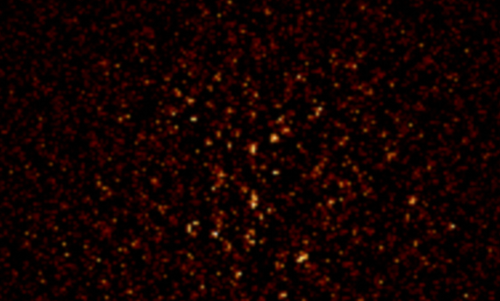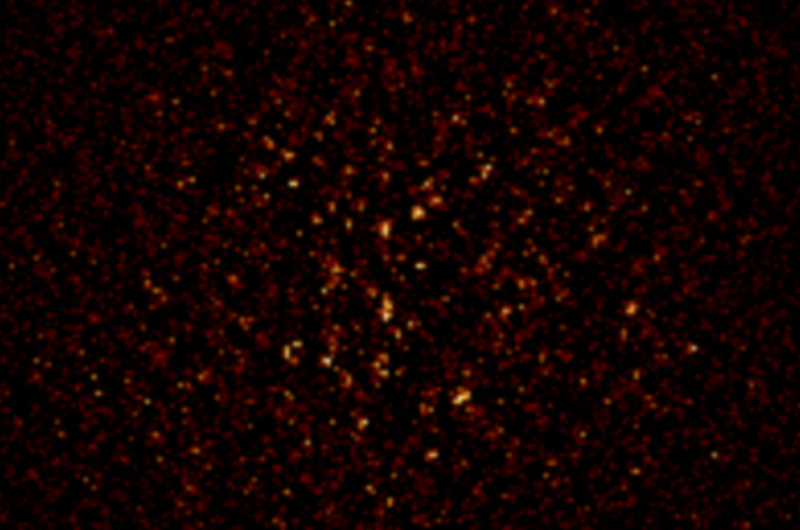Barium Ion Detector for Next-Generation Neutrino Studies
To find out whether the neutrino is its own antiparticle, experimentalists need to observe extremely rare decays, occurring perhaps once per year. Now a research team has demonstrated a technique that will help to identify these events unambiguously by detecting the decay product—a single barium ion. The method could form the heart of a ton-scale experiment, operating over a period of years, that could detect a radioactive decay that might begin to answer some of the most important questions in particle physics.
The electron and the positron are antiparticles of one another; they are not the same particle. In fact, all particles with half-integer spin (fermions) are known to have distinct antiparticles, except for the neutrino. Certain particle physics theories in which the neutrino and the antineutrino are the same particle can explain why neutrino masses are so small. These theories also allow an asymmetry between matter and antimatter that might account for the overall excess of matter in the Universe as a whole—a prerequisite for our existence.
To study this neutrino property, researchers have been looking for signs of an event called neutrinoless double-beta decay. Ordinary double-beta decay is an unusual mode of radioactivity in which a nucleus emits two electrons and two antineutrinos at the same time. However, if neutrinos and antineutrinos are identical, then the two antineutrinos can, in effect, cancel each other, resulting in a neutrinoless decay, with all of the energy going to the two electrons. Several collaborations are looking for this decay mode, and current experimental evidence puts the half-life of the hypothetical decay at about years or more (see 26 March 2018 Viewpoint). To improve sensitivity by a factor of 100, researchers need to scale up the experiments to a ton of material. Even then, the sought-for decays would happen at most a handful of times a year, and a crucial challenge will be to distinguish them from other rare, similar-looking events.
One of the decays in these experiments is the transformation of xenon-136 to barium-136. The NEXT Collaboration has now built a device that provides unequivocal detection of the single barium ion that neutrinoless decay of xenon-136 would produce. The detector relies on single-molecule fluorescence imaging, a tool that biochemists have used with great success. It employs a chemical compound called a fluor that becomes fluorescent only when it traps a targeted ion. Finding a barium ion in coincidence with detection of two electrons of the right energies would be unequivocal proof that neutrinoless double-beta decay had occurred.
Earlier research by NEXT team members Ben Jones and David Nygren and graduate student Austin McDonald, all at the University of Texas at Arlington, identified fluor molecules designed to work with calcium ions that also showed sensitivity to barium, a chemical cousin [1]. The NEXT team then designed a device that would use one of those fluors to collect and reveal barium ions generated in a large volume of gaseous xenon. They coated thin quartz plates with a transparent, porous plastic that included fluor molecules and soaked some in a solution containing barium ions and others in a barium-free solution. Following the usual procedure from biochemistry, the researchers used a laser and a microscope to scan the plates with excitation light at a specific wavelength (488 nanomters); simultaneously, they looked for spots of fluorescence at a different wavelength (525 nanometers).
Although the “clean” samples showed some spots, due to the trace presence of other metal ions, the team found a clear excess of distinct spot emission from the plates treated with barium.
In a large-scale detector using such devices, the NEXT team imagines a chamber containing a ton of high-pressure, purified xenon gas. An electric field applied across the xenon would cause barium ions produced by double-beta decay—whether two-neutrino or neutrinoless—to drift toward fluor-impregnated detectors and create fluorescent spots.
Phillip Barbeau of Duke University in Durham, North Carolina, describes the proposed method as a “beautiful marriage” of particle and atomic physics and says that, although there will be engineering challenges in scaling up to a ton-scale experiment, he sees no obvious problems standing in the way of success. However, he points out that while a detection of neutrinoless double-beta decay would prove that the neutrino is its own antiparticle, absence of such a detection would not prove the opposite—there are ways to suppress the neutrinoless decay even in models where the neutrino and antineutrino are the same.
This research is published in Physical Review Letters.
–David Lindley
David Lindley is a freelance science writer in Alexandria, Virginia.
References
- B. J. P. Jones, A. D. McDonald, and D. R. Nygren, “Single Molecule Fluorescence Imaging as a Technique for Barium Tagging in Neutrinoless Double Beta Decay,” J. Instrum. 11, P12011 (2016).





